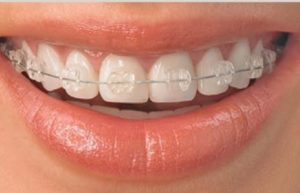+919790726189

This is your website preview.
Currently it only shows your basic business info. Start adding relevant business details such as description, images and products or services to gain your customers attention by using Boost 360 android app / iOS App / web portal.
BRACES AT WEST MAMBALAM ASHOK NAGAR CHENNAI Bra...

BRACES AT WEST MAMBALAM ASHOK NAGAR CHENNAI Braces and Their Effect on Soft Tissues and Musculature Braces are an essential orthodontic treatment used to correct misaligned teeth and improve oral health. While they primarily work on repositioning the teeth and jaws, braces also have a significant impact on the surrounding soft tissues and musculature. Understanding these effects can help patients prepare for their orthodontic journey and ensure they take the necessary steps for optimal results. Soft Tissues and Braces Soft tissues in the oral cavity, such as the gums, lips, and cheeks, play a crucial role in the overall function and aesthetics of the mouth. When braces are installed, these tissues undergo considerable changes. Initial Irritation and Adaptation When braces are first placed, patients often experience discomfort due to friction between the brackets and the inner lining of the cheeks and lips. This irritation can cause minor sores and inflammation. Over time, the soft tissues adapt to the presence of braces, becoming more resistant to irritation. Orthodontic wax can be used to minimize discomfort and allow soft tissues to adjust more comfortably. Gum Health and Inflammation Braces can make oral hygiene more challenging, leading to an increased risk of plaque buildup and gum inflammation (gingivitis). Regular brushing, flossing, and the use of interdental brushes are essential to maintaining healthy gums during treatment. In some cases, excessive pressure from braces may cause temporary gum recession, which usually resolves once the teeth settle into their new positions. Changes in Lip and Cheek Support As teeth shift into proper alignment, the soft tissues that cover them also adjust. Patients with severe misalignment or protruding teeth may notice significant changes in their facial profile as the lips and cheeks are better supported by the repositioned teeth. Musculature and Braces The muscles surrounding the mouth and jaw also experience significant changes during orthodontic treatment. Muscle Re-Training Misaligned teeth can lead to improper muscle function, including tongue thrusting, incorrect swallowing patterns, and abnormal jaw movements. As braces gradually align the teeth and jaw, the muscles must adapt to these new positions, often requiring conscious effort to correct habits developed over time. Jaw Muscles and Bite Adjustment Braces can influence the jaw muscles by correcting bite issues such as overbites, underbites, and crossbites. Patients may initially experience jaw fatigue or soreness as their muscles adjust to the new alignment, but this typically subsides as they become accustomed to the changes. Long-Term Benefits Proper alignment achieved through braces reduces strain on the jaw muscles, preventing conditions such as temporomandibular joint (TMJ) disorders. Improved muscle balance and function contribute to better chewing efficiency and overall oral health. Conclusion Braces do much more than straighten teeth—they also have a profound impact on the surrounding soft tissues and musculature. While the initial phase of treatment may bring discomfort and adjustment challenges, the long-term benefits of improved oral health, better muscle function, and enhanced facial aesthetics make it a worthwhile journey. By maintaining good oral hygiene and following orthodontic recommendations, patients can achieve optimal results and enjoy the lasting benefits of a well-aligned smile. Dental Clinics in West Mambalam Dentists in West Mambalam Dentists in Ashok Nagar Best dentist near me Best Dental Clinics in West Mambalam Oral surgeon in West Mambalam Dental Implants in West Mambalam Oral surgeon in Ashok Nagar Painless tooth removal at West Mambalam Rootcanal treatment at West Mambalam Top rated dentist in West Mambalam Braces specialist at West Mambalam

